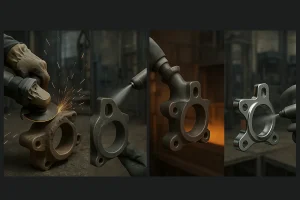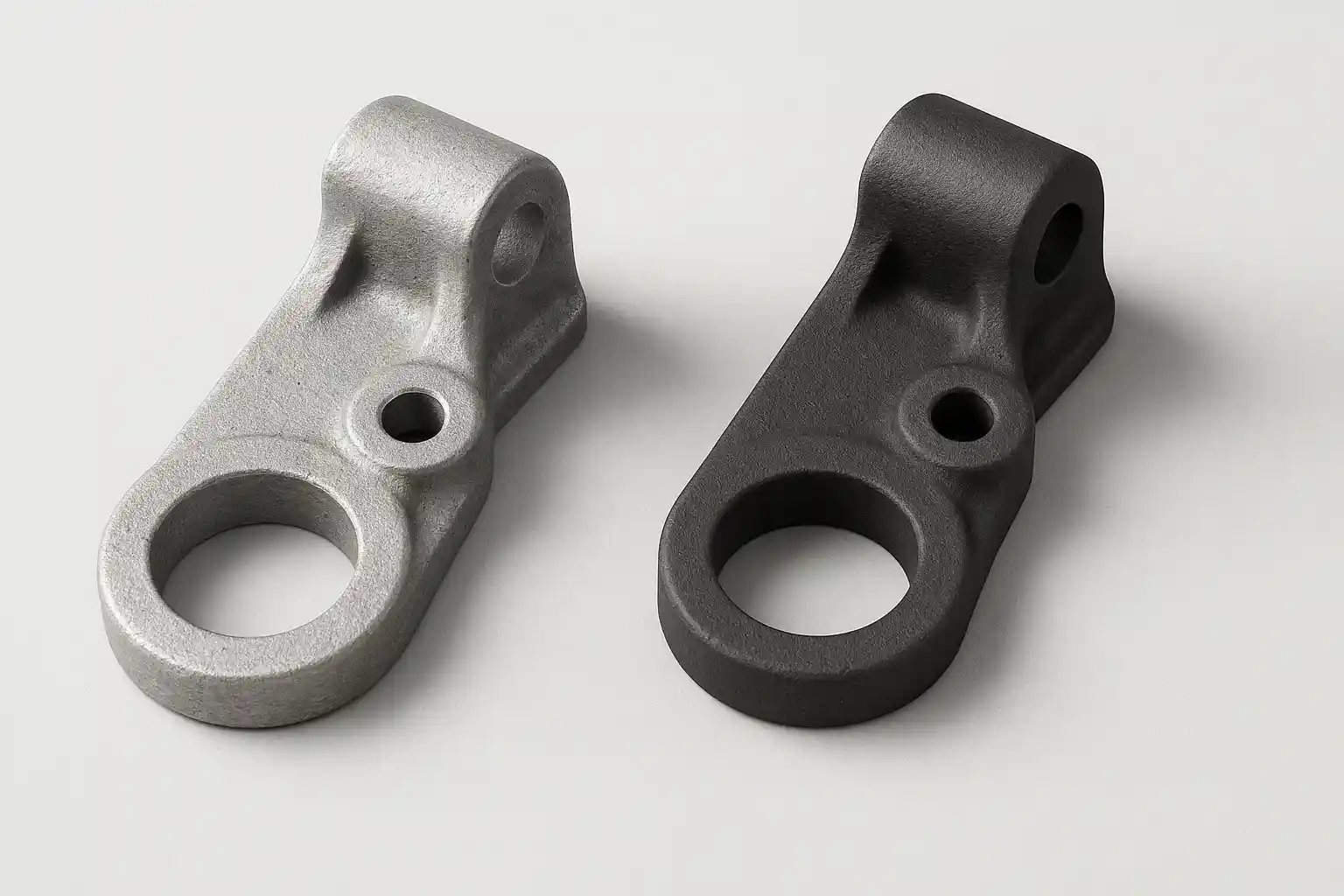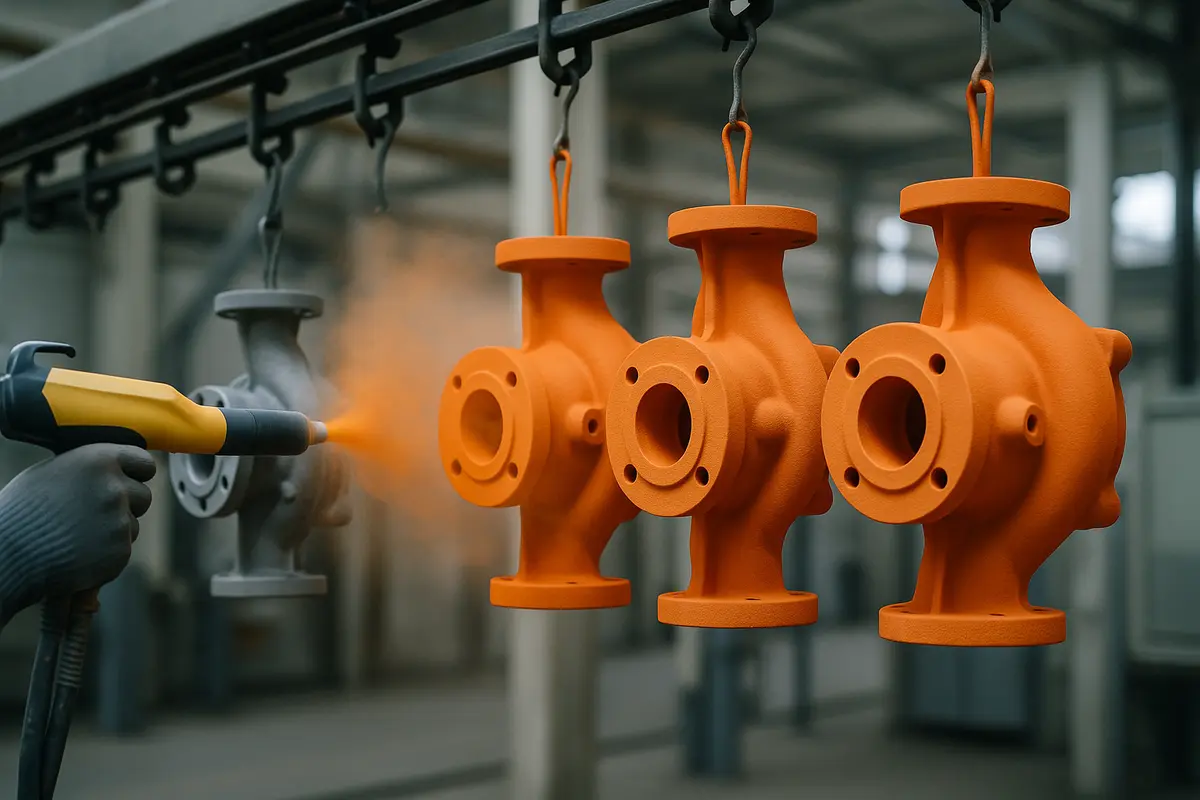Casting provides parts with complex geometries, but the surface of a casting taken from the mold often contains defects and impurities. Casting post-processing is a critical system engineering endeavor that determines the final quality, durability, functionality, and appearance of the product.
This article systematically introduces the essential processing stages and core technologies a casting must undergo to transition from a rough blank to a functional surface.
What is Casting Post-Processing
Casting post-processing refers to a series of structured physical, chemical, and electrochemical treatments performed on a casting after demolding, initial cleaning, and dimensional refinement (machining, if required), to meet the specified mechanical properties, corrosion resistance, and aesthetic requirements dictated by the technical drawings. It serves as the quality assurance link connecting the rough-processed casting to its final operational performance.
The Casting Post-Processing Workflow
The execution of the entire process strictly adheres to the progressive principles of from coarse to fine, from whole to part, and from preparation to enablement. This methodology requires that each preceding step must create the necessary conditions for the next. For example, stress must first be relieved through strengthening cleaning (shot blasting) before high-adhesion functional coating can be applied, ensuring that every treatment step builds upon the quality foundation of the previous stage, avoiding rework and defects.
1. Rough Cleaning and Contour Correction
The first step in the process must be sand and mold shakeout, as residual sand and core material, if not thoroughly removed, will severely wear down subsequent tooling. Only after residue removal can gate, riser, and flash cutting proceed. Following rough cutting, grinding, trimming, and deburring must be carried out, utilizing fine techniques such as Thermal Energy Method (TEM), Electrochemical Machining (ECM), or ultrasonic cleaning. This step is the end point for ensuring the basic contour of the casting is acceptable, preparing the part physically for overall treatment in the next stage.
2. Surface Purification and Strengthening
Once the casting surface is free of major remnants and burrs, it moves into the fine processing stage. First, high-energy sandblasting or shot peening (shot blasting) is performed. This step has a dual function: it not only thoroughly removes oxide scale and corrosion but, more importantly, relieves internal casting stress through impact. Stress relief is crucial as it enhances the fatigue life of the part. Before any functional treatment is applied, degreasing and oil removal must be performed to ensure the surface is chemically clean, which is the foundation for successful coating adhesion.
3. Functional Enablement and Protection Preparation
This is the core stage of post-processing where specific properties are imparted to the casting. Depending on the operating environment, the casting may undergo surface hardening and modification, such as carburizing or nitriding heat treatments, to enhance wear resistance. This is followed by preparation for protection, where the casting may receive a conversion coating (e.g., phosphating, chromating) to act as an adhesion bridge between the final coating and the base metal. Additionally, for specific functional requirements, high-performance coatings, such as Physical Vapor Deposition (PVD) or Chemical Vapor Deposition (CVD) in a vacuum environment, may be applied.
4. Final Protection and Quality Delivery
The final step in the process is final protective coating. This must be applied only after the casting’s dimensions, performance, and cleanliness are completely compliant. The range of protective processes is highly diverse, including: spray painting, electroplating (e.g., nickel or chrome plating), hot-dip galvanizing, electroless plating, and for specific alloys, anodizing or Micro-Arc Oxidation (MAO). Upon completion of protection, the entire workflow enters the quality inspection phase. Only castings that meet all technical specifications are packaged and delivered to the customer, marking the successful conclusion of the post-processing transformation.

Casting Post-Processing Advantages
Implementing a systematic casting post-processing workflow yields the following key advantages:
- Improved Product Reliability: Shot peening eliminates casting stress, significantly increasing the part’s fatigue life and reliability.
- Extended Service Life: Techniques like carburizing, electroplating, and thermal spraying provide the casting with excellent wear and corrosion resistance.
- Enhanced Functionality: Advanced coatings like PVD/CVD enable specialized functions such as ultra-hardness, low friction, or insulation.
- Increased Added Value: Superior surface finish and functional coatings (e.g., anodizing) enhance the product’s aesthetics and market competitiveness.
Post-Processing Technology Overview
The table below summarizes the most representative technologies in casting post-processing, highlighting their main functions and typical application areas:
| Technology Type | Key Process Name | Primary Functional Goal | Typical Application Scenarios |
| Mechanical & Physical Cleaning | Shot Peening/Sand Blasting | Remove scale, relieve internal stress, enhance fatigue life. | Surface preparation for all castings before coating, stress relief for structural parts. |
| Thermal Energy Method (TEM) | Remove fine burrs from complex internal holes and cross-bores. | Automotive engine parts, hydraulic valve bodies. | |
| Heat Treatment & Modification | Carburizing/Nitriding | Increase surface hardness, wear resistance, and fatigue strength. | Cast steel gears, cams, high-load-bearing components. |
| Functional Plating | Electroplating/Electroless Plating | Provide uniform corrosion resistance, high hardness (chrome plating), or functional surfaces. | Valves, pump casings, hydraulic system components. |
| Vacuum & Vapor Coating | PVD/CVD | Impart extremely high wear resistance, temperature resistance, and low friction coefficient. | Aerospace components, precision molds. |
| Alloy-Specific Treatment | Anodizing/Micro-Arc Oxidation (MAO) | Form a hard ceramic oxide film on aluminum/magnesium alloy surfaces, enhancing corrosion resistance. | Automotive lightweight parts, electronic enclosures. |
| Corrosion Protection | Hot-Dip Galvanizing | Form a thick, metallurgically bonded layer, providing long-term sacrificial protection. | Outdoor cast iron parts, construction structural components. |
Extended Post-Processing Technologies
To meet the requirements of high-precision, high-wear-resistance, or specialized alloy castings, the industry also employs the following more complex and precise post-processing methods:
| Technology Type | Key Process Name | Target Objective / Advantage | Typical Application (for high-value castings) |
| Precision Deburring | Electropolishing | Remove microscopic surface irregularities and burrs via electrochemical dissolution, achieving a mirror finish. | Medical devices, food-grade stainless steel castings. |
| Magnetic Abrasive Finishing | Utilize magnetic abrasives to penetrate complex passages and internal cavities for efficient, non-damaging fine polishing. | Valve interiors, precision flow channel components. | |
| High-Temperature Coating | Thermal Spraying | Melt and high-velocity spray metal or ceramic powder onto the surface to form a functional coating. | Anti-oxidation layers for aerospace engine blades, high-temperature components. |
| Micro-Repair | Laser Cladding | Local fusion of new alloy powder to repair wear or defects, upgrading material properties in specific areas. | Repair of large molds, dimensional restoration of critical components. |
| Alloy-Specific Treatment | Solution Treatment & Aging | (Heat Treatment) Specifically for aluminum and nickel-based alloys, controls heating/cooling to improve overall strength and hardness. | Die-cast aluminum alloy parts, precision-cast turbine blades. |
Conclusion
The casting post-processing workflow is the critical bridge in modern manufacturing, linking machining to final application. Through a scientific combination of processes, it endows castings with the required fatigue life, functionality, and environmental resistance. Only by strictly following this progressive workflow—from cleaning to enablement—can high product reliability be assured.
To enhance product competitiveness, please immediately contact a professional engineering team to evaluate and optimize your customized casting post-processing strategy.



